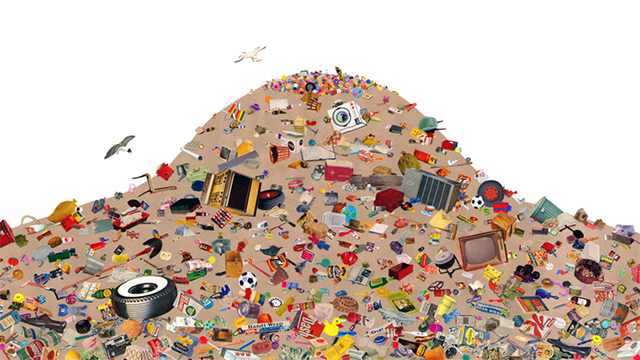To respond to the Do Now, you can comment below or tweet your response. Be sure to begin your tweet with @KQEDEdspace and end it with #DoNowObject
For more info on how to use Twitter, click here.
Do Now
Select an everyday object or material as your personal symbol. What object or material did you choose, and what might it signify about you?
Introduction
Where do artists find their inspiration? You might be surprised to learn that for many artists, inspiration often comes from ordinary, everyday objects, experiences, and materials.
In addition to traditional art materials like paint, ink, or clay, some artists create their works using commonplace materials. In the video below, artist Gu Wenda describes an installation he created for SFMOMA in 2013 using a very nontraditional material: human hair. Wenda believes hair symbolizes all of humanity, particularly in a multicultural society.
What ordinary or everyday material or object best represents you? Try to think of something that might not be obvious at first. For example, a magnifying glass might show that you like to examine the world carefully and understand how and why something happens. Feathers, on the other hand, might say that you are light and carefree, or perhaps independent. A balloon could show that you are playful or joyous. Perhaps there’s a specific object that has personal significance for you, such as a gift from a loved one or a treasured item you found on a walk.
Resource
VIDEO: Gu Wenda on United Nations — Babel of the Millennium (SFMOMA)
Artist Gu Wenda reflects on united nations—babel of the millennium, the site-specific installation he created for SFMOMA, and explains how his art unifies races and unites people.
To respond to the Do Now, you can comment below or tweet your response. Be sure to begin your tweet with @KQEDedspace and end it with #DoNowObject
For more info on how to use Twitter, click here.
